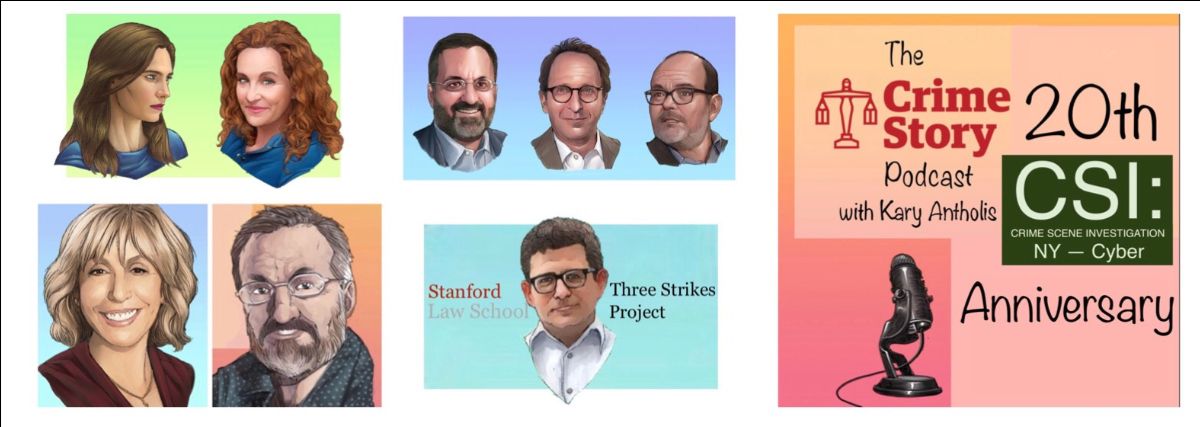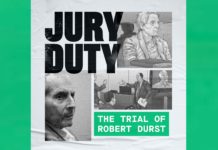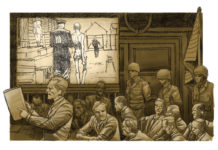Team Crime Story:This was an extremely busy week for us at CrimeStory.com. Here is a recap of the events of the last seven days.

We began the week with Amanda Knox’s interview with Ayelet Waldman, an author and prison abolitionist. In their conversation, they discuss Ayelet’s recent piece for The Atlantic entitled “Should I Help Incarcerate the Man Who Tried to Sexually Assault Me?

October 6, 2020 marked the 20th anniversary of the debut of CSI: Crime Scene Investigation. This series and its spinoffs CSI: Miami, CSI: NY and CSI Cyber were enormously successful. But beyond their commercial success, these shows have had a significant impact on the American criminal legal process, most notably with a phenomenon that came to be known as “the CSI effect” which has been defined as a “belief that forensic science television dramas influence American jurors to want more forensic evidence to convict defendants of crimes.”

In commemorating this anniversary, we presented my two-part interview with Carol Mendelsohn, the founding showrunner CSI: Crime Scene Investigation, and Executive Producer of that show and all of its spin-offs.
In Part 1 of the conversation, Carol and I discuss the forces that shaped her values and influenced her as a storyteller, her entree into the world of television, the evolution of her career, the beginnings of CSI and how the core creative team discovered the show’s identity.
In Part 2 of our chat, we take a deep dive into one of the iconic episodes of CSI which was directed by Quentin Tarantino, we look at the impact of the show on America’s criminal justice system and Carol reflects on the enormous success of the show and it’s spinoffs.
We also reprised my interview from last year with Pam Veasey who served as showrunner and Executive Producer of both CSI: NY and CSI: Cyber.

And on Thursday, we offered Michael Romano’s recent report about Stanford Three Strikes Project clients Yvette Brown and Jimmy Gaffeney who were freed after serving a combined 40 years behind bars.

We ended the week with Crime Story’s exclusive transcript publication of the interview that the team at The Josh Marshall Podcast and I conducted with Andrew Weissmann, who served as a lead prosecutor in Robert Mueller’s Special Counsel’s Office. His new book Where Law Ends: Inside the Mueller Investigation gives the only such inside account and explores the prosecutors’ key decisions and hurdles, their successes and their failures. According to press notes for the book, “No other account has done that or is in the works.”
Below we present Hannah Teich’s condensed curation of the week’s more interesting stories from Crime Story Daily. (Read Hannah’s full essay including links to the mentioned articles.)
On the criminal justice policy front: Pieces from KQED and the Brennan Center focus on Prop. 25, California’s upcoming referendum to eliminate cash bail. Politico Magazine highlights six cities where police reform will be on the ballot next month, from Los Angeles to Akron, Ohio. And the Washington Post reports from Texas, where the “law and order” theme touted by Republicans has fallen surprisingly flat.
In muckraker/watchdog reporting: As courts around the country begin to restart their criminal dockets, a piece from The Atlantic examines the many practical obstacles standing in their way. Vice News reports from a “super-spreader jail” in Grady County, Oklahoma, while The 19th goes inside the COVID unit at the largest women’s prison in the world. And a piece from the New York Times focuses on the rural Mountain West, where outbreaks are spreading in at least a dozen local jails.
In complex crime storytelling: USA Today recounts the rise and fall of Robert Chody, the troubled sheriff of Williamson County, Texas. And a piece from the Washington Post focuses on the life, death, and legacy of George Floyd.
And in culture/true crime: A piece from The Atlantic explains “why British police shows are better.” The Guardian highlights “Death Row Exonerees,” a new exhibition of work by the photographer Martin Schoeller. And “Solitary,” a finalist for the Texas Observer’s short-story contest, takes readers inside the life of a man held in isolated detention, the “prison within the prison.”
Again, you can read Hannah’s full weekly essay and find links to each of the mentioned articles.
And finally, here is your opportunity to catch up on previous Crime Story Newsletters.
Thanks again for reading and listening.
Kary Antholis
Publisher/Editor, Crime Story






